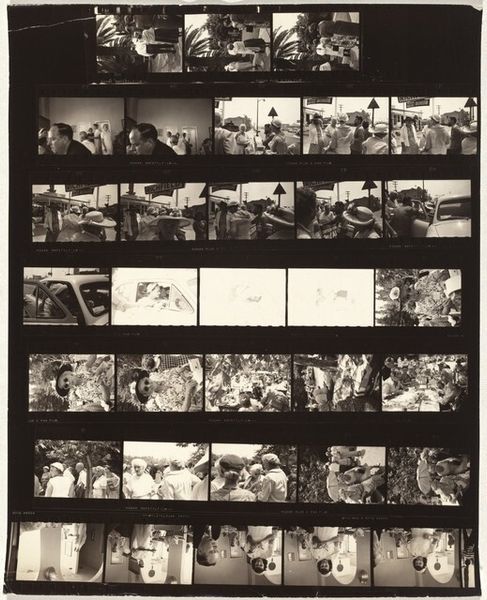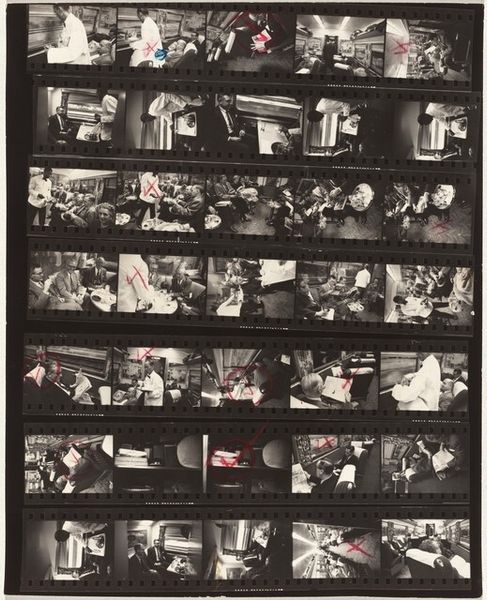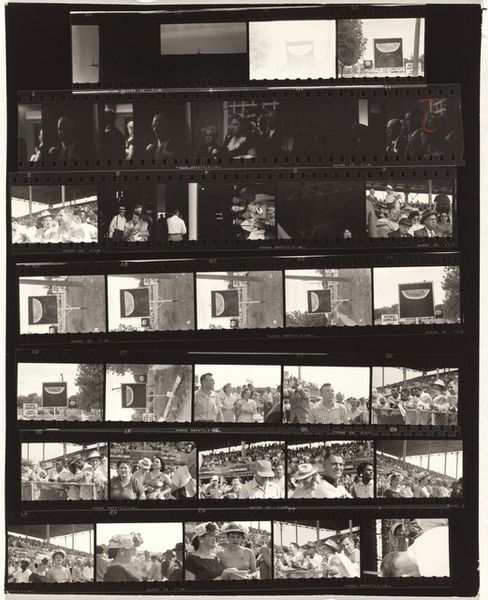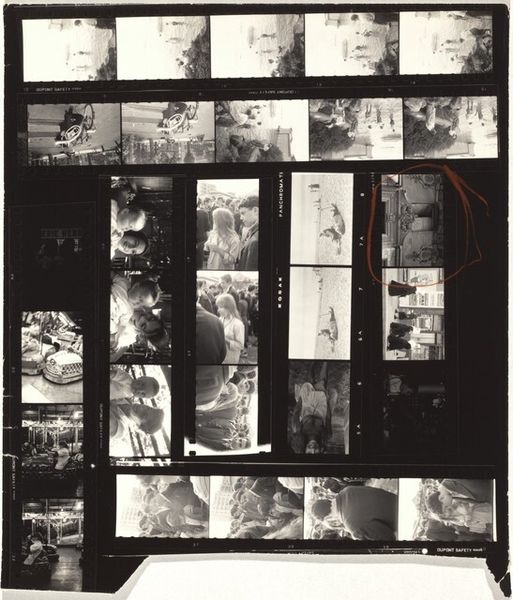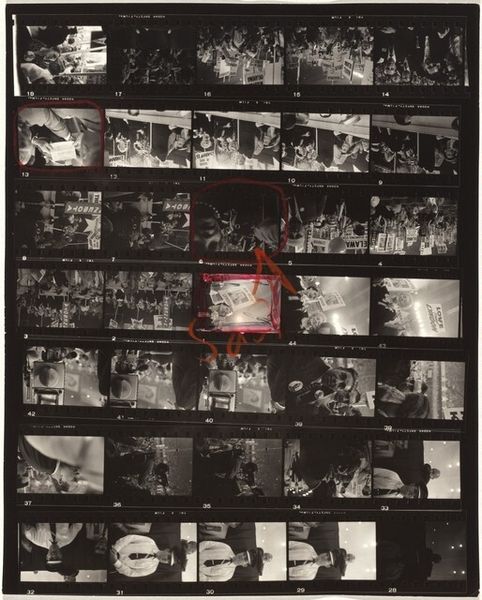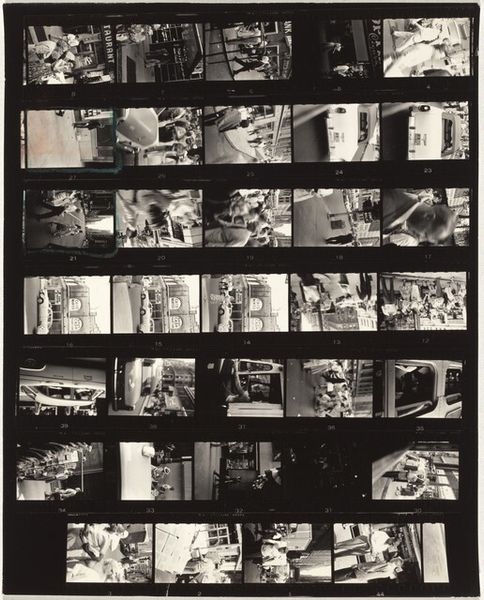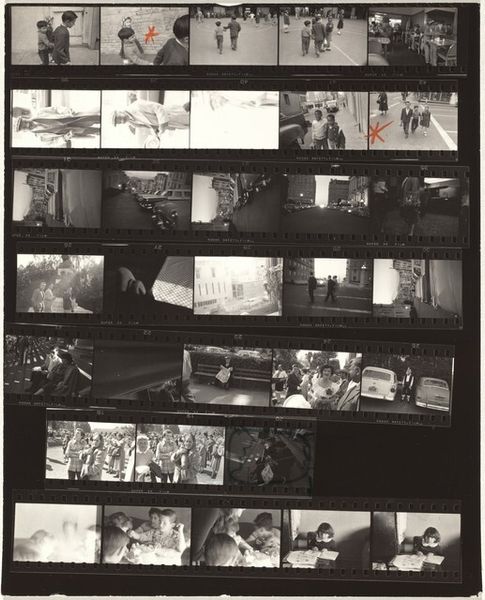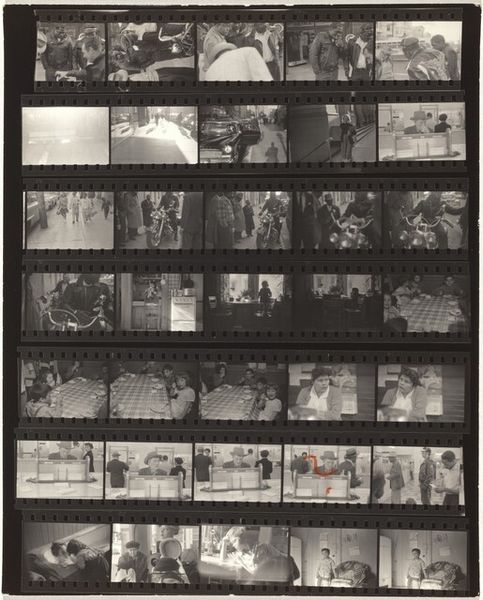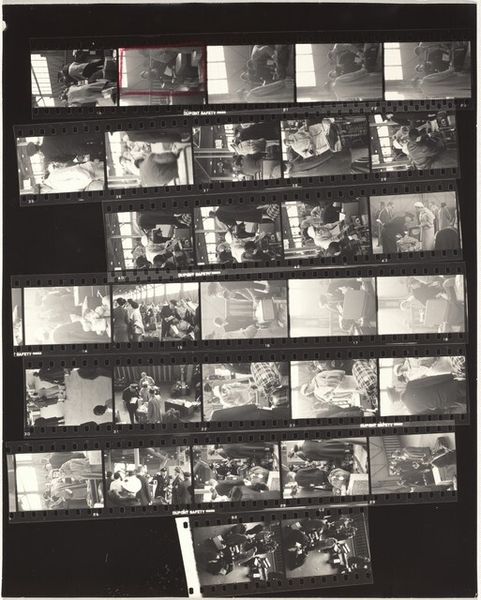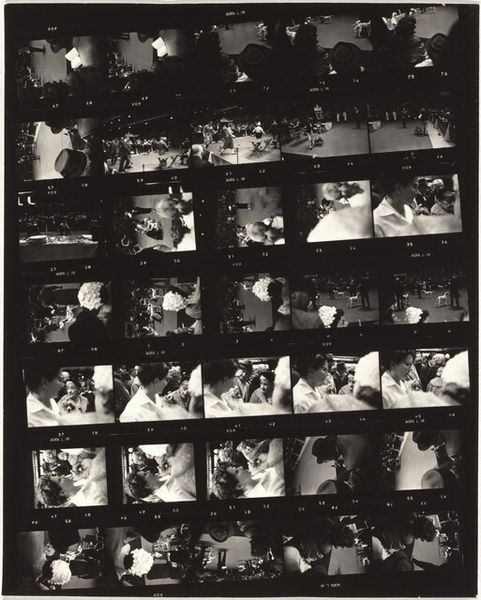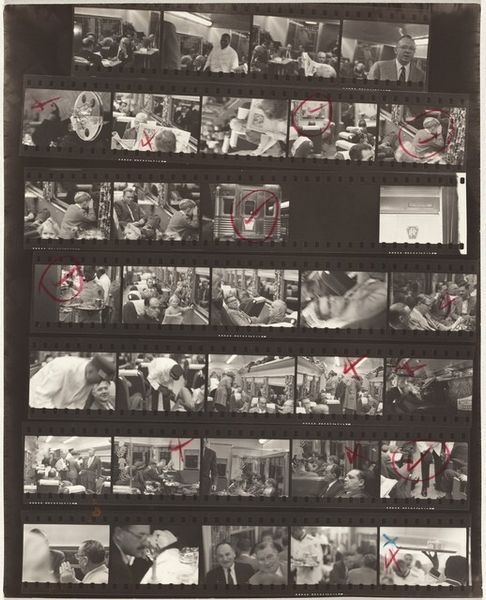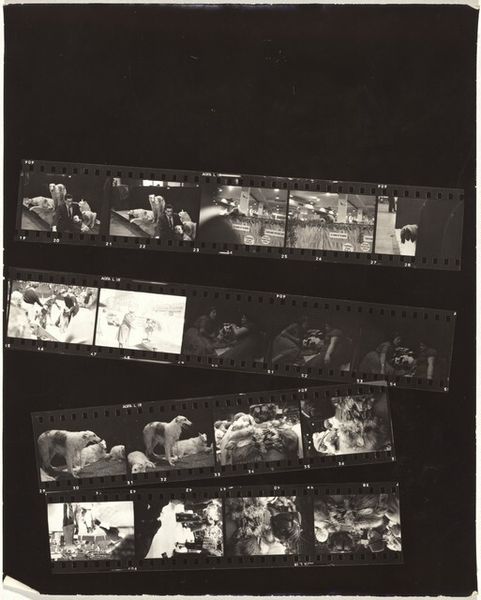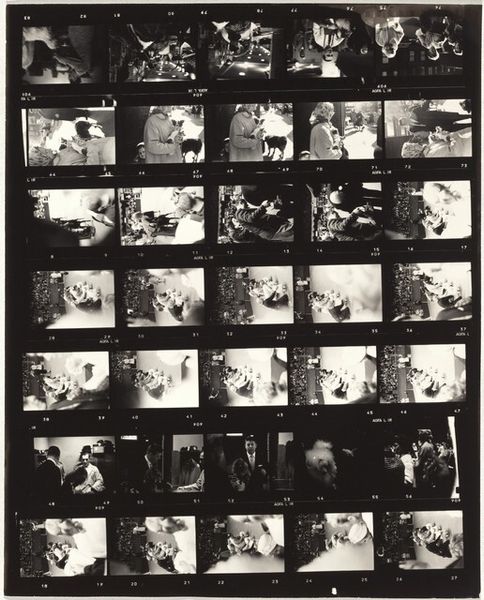
Dimensions: overall: 25.2 x 20.2 cm (9 15/16 x 7 15/16 in.)
Copyright: National Gallery of Art: CC0 1.0
Editor: This is Robert Frank's "Hollywood 30," created in 1958 using a gelatin silver print. It feels like we're looking at raw documentation, an unedited contact sheet showing multiple takes. What do you see in how the photograph was created and what does that choice tell us? Curator: The fact that it’s a contact sheet is crucial. Frank isn’t presenting us with a single, perfected image, but with the raw material of image-making. The dark edges, the sprocket holes – these are normally hidden. But here, they highlight the physical process. The film itself becomes a subject, representing the means of production of images and how that affects our perception of "reality". Editor: So it's not just *what* he photographed, but how he presented the process that matters? Curator: Precisely. Think about the material conditions: mass production of film, affordable cameras enabling street photography, the darkroom labor involved in developing and printing. These were key to creating art, reflecting how accessible image-making became. It speaks volumes about the social landscape and the democratizing effect of photography at the time. Editor: Does the gelatin silver print contribute anything specific? Curator: Absolutely. The stark contrast, the gritty texture – those qualities emphasize the unvarnished, documentary aspect of his project. Consider the context: it’s 1958, and he is questioning idealized portrayals. The choice of the material reinforces his desire for realism, challenging glossy celebrity imagery dominant at the time. This emphasizes labor against commercialization, I think. What do you think about that? Editor: I see what you mean, that’s something I didn’t notice initially! I thought it was a glimpse into an event in Hollywood. It really gives new meaning when one considers materiality. Thank you! Curator: Indeed. By focusing on the production process, on materiality, we can reveal Frank’s critique of Hollywood, as well as what that implies about material means within culture in the 1950’s United States.
Comments
No comments
Be the first to comment and join the conversation on the ultimate creative platform.
